By: David M. Tapping
The Lean Pocket Handbook for Financial Services is a quick, ready-to-use, reference allowing employee’s in the financial, insurance, and banking industry to learn, understand, and apply Lean (continuous improvement) tools. The book describes the basic thirteen Lean tools (5S, continuous flow, standard work, paper file system, Six Sigma, etc.) that have proven successful in financial service applications. Lean is a business improvement system based on the powerful concepts documented by the world-class Toyota Motor Corporation. Lean is a process to eliminate waste. For these financial service industries to obtain their share of the 21st century investment and banking business, costs must be contained and waste eliminated. If this does not occur through the use of Lean and Six Sigma, your ATM card will be drawing from the Chekiang First Bank Ltd., Beijing, China.
Lean Pocket Handbook for Financial Services
We will never see another time in history where two events occurring simultaneously will impact every man, woman, and child. These events will create an unprecedented opportunity for the financial services (i.e., banks, credit unions, investment companies, and mortgage and insurance companies) by creating billions of dollars in equity, thereby, requiring their services.
The first event is the emergence of China, Poland, India, and Russia as a consumer (and producer) of products and services. Second, the largest segment of the population in the United States, the baby boomers, will be experiencing retirement. With these two events occurring simultaneously it will create tremendous opportunities for the financial service industries. These industries must be ready to compete globally for this business. In doing so, efficient business systems and practices must be adopted and continually improved upon.
Lean is a business improvement system based on the powerful concepts documented by the world-class Toyota Motor Corporation. Lean is a process designed to eliminate waste. For these financial service industries to obtain their share of this new business opportunity, costs must be contained and waste eliminated. If this does not happen, your ATM card will be drawing from the Chekiang First Bank Ltd, Bejing, China.
Lean is a way to increase margins, customer retention, and reduce stress. Lean can be used in the front office of the NFL or the local coffee shop in Bombay, India. It has been around for decades in manufacturing and recently having success in healthcare, construction, and now the financial service industries.
An old Chinese proverb states: “You can’t do today’s job with yesterday’s methods and be in business tomorrow.”
Industries Served by Using This Handbook:
Financial Services
Processes such as: portfolio management, insurance claims, financial long-term healthcare planning, along with retirement planning etc. must use measurements of customer satisfaction per agent or account executive, new account openings, along with profitability and customer satisfaction.
Banks
Processes such as: loan applications, monthly statement processing, and small business and consumer loans, etc. must use measurements of deposit assets, market share, and client capture, along with profitability and customer satisfaction.
Credit Unions
Processes such as: mortgage applications, investment property financing, auto loans, business and personal savings accounts, and government loans, etc. must use measurements of deposit assets, client retention, margin loan per unit, time efficiencies, along with profitability and customer satisfaction.
Insurance Companies
Processes such as claim resolution, accurate, timely and competitive quoting, and company assessments must use measurements such as timeline of claims per client, leverage of client base for referrals, new group enrollments, along with profitability and customer satisfaction.
Note: At the end of each section you will have a page titled Five Strategies for Using This Tool. This page should be used to write notes on how this tool can be applied to your area or process. Remember, many Lean tools compliment each other. Very rarely will only one tool be used.
Paperback – 3.75” x 5.5” – 94 pages – 40+ Illustrations, Forms, and Worksheets – Examples Throughout – Glossary

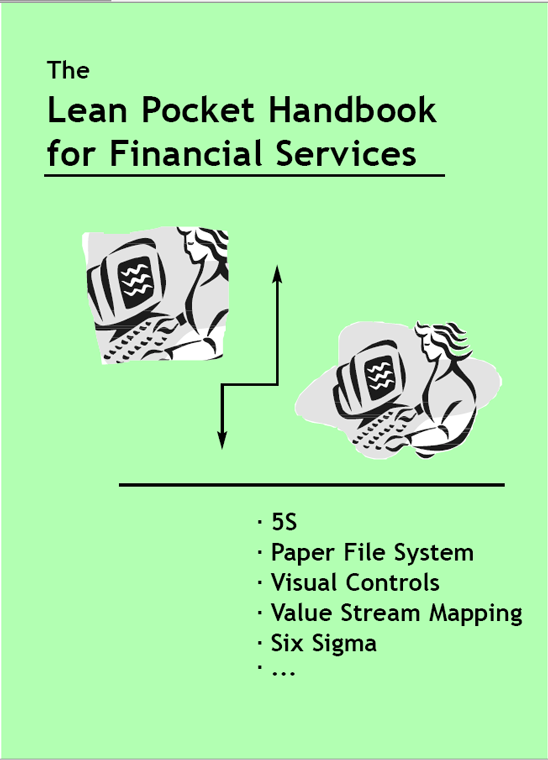
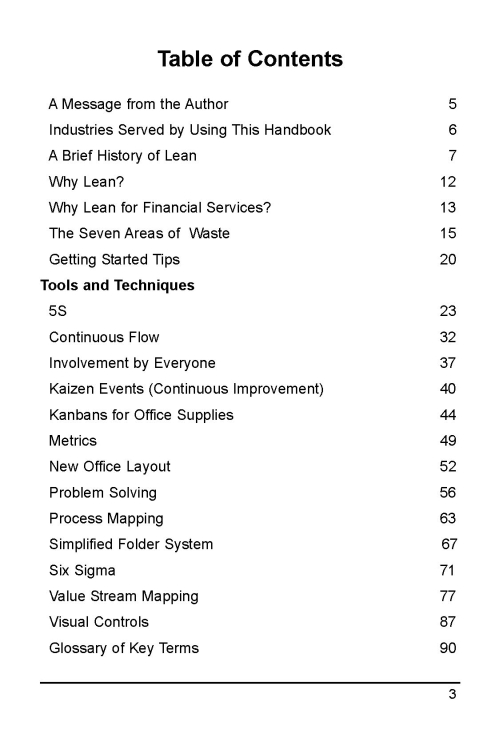
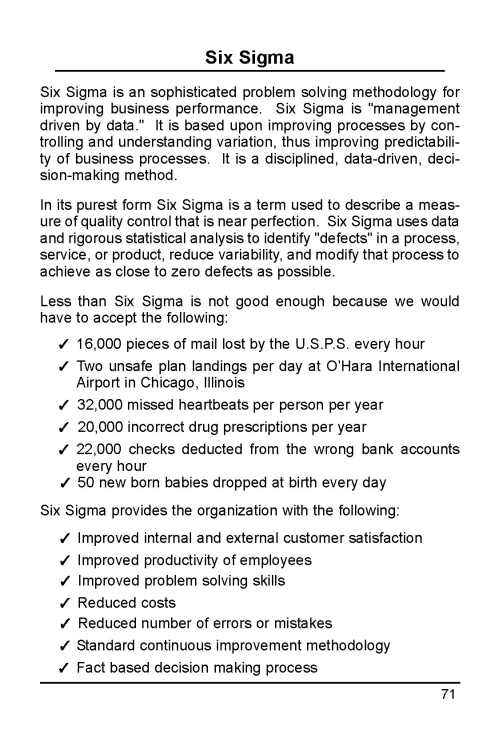
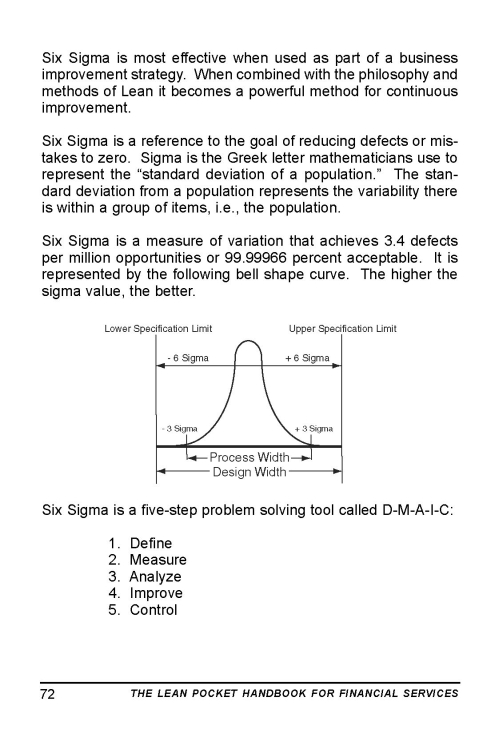
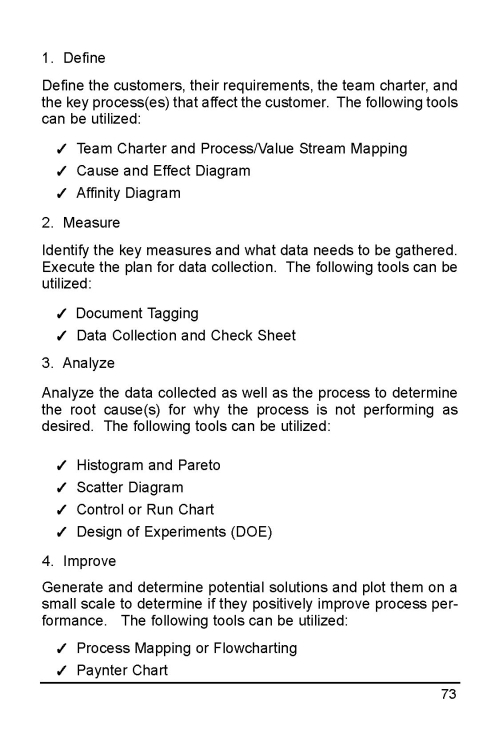
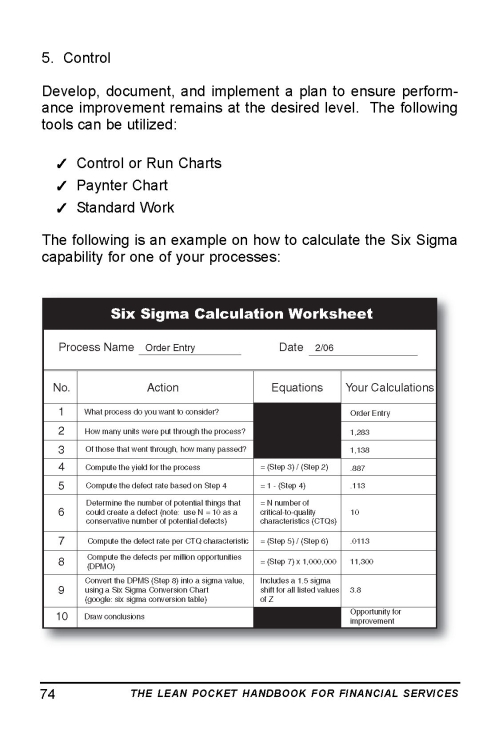
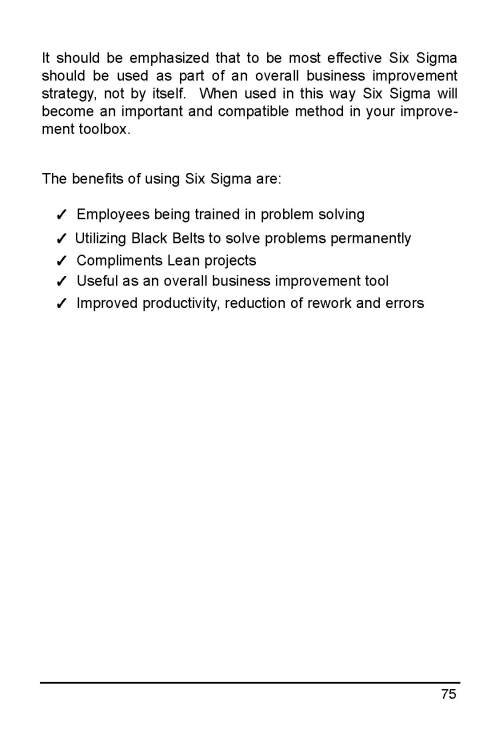
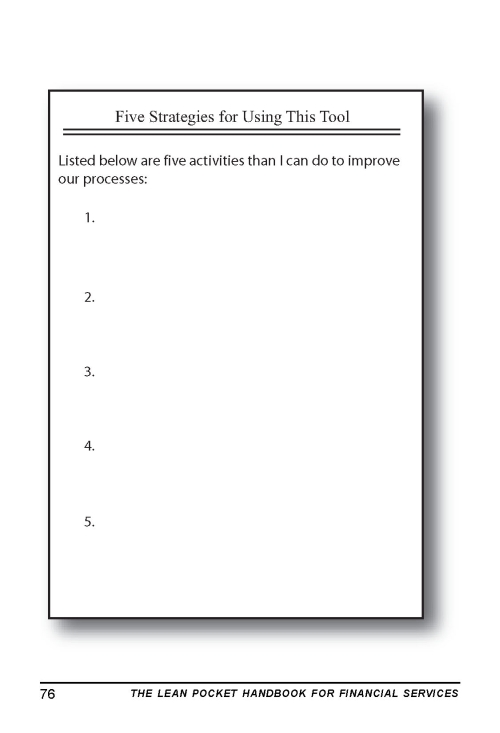
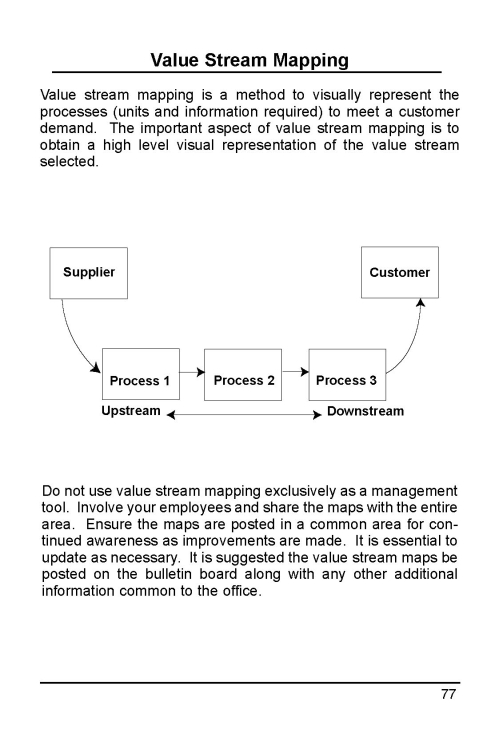
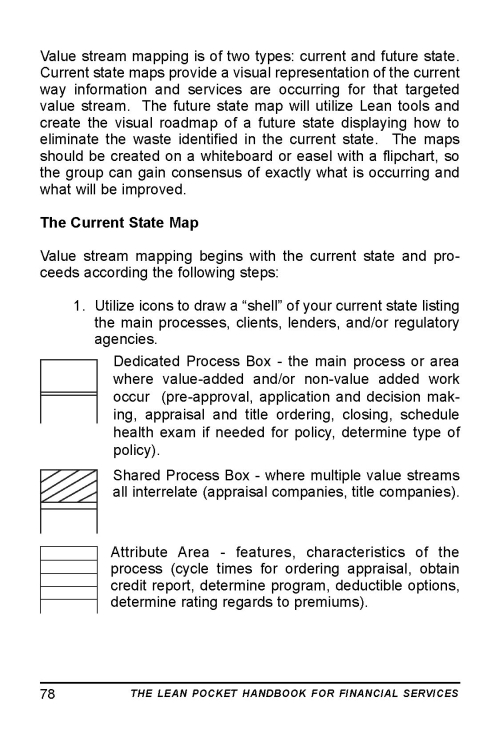
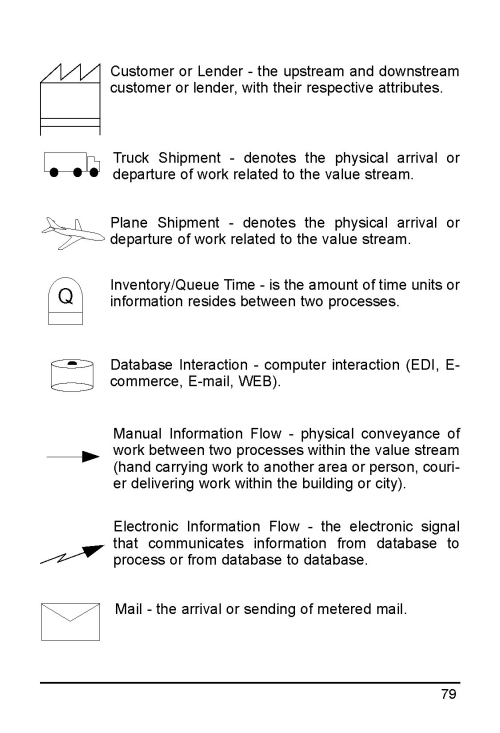
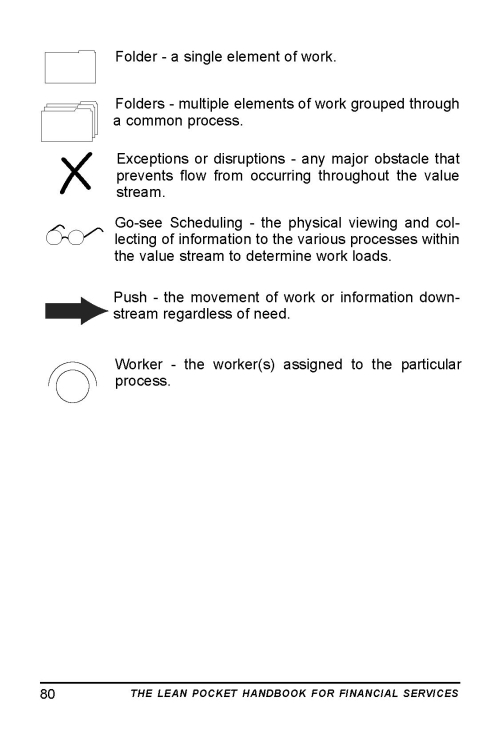
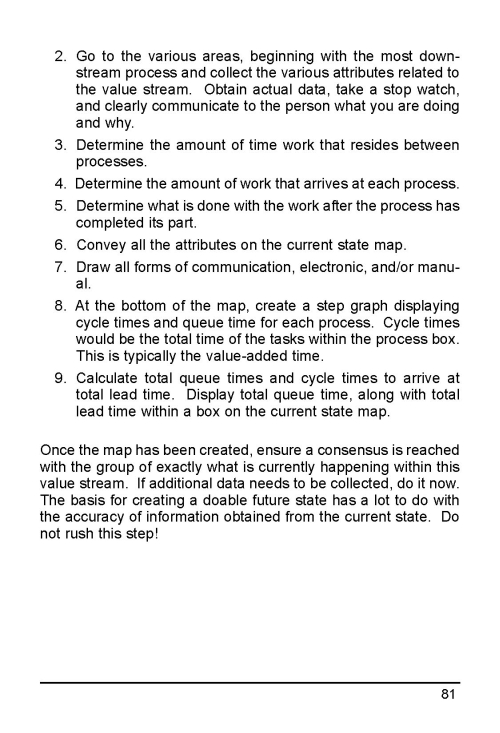
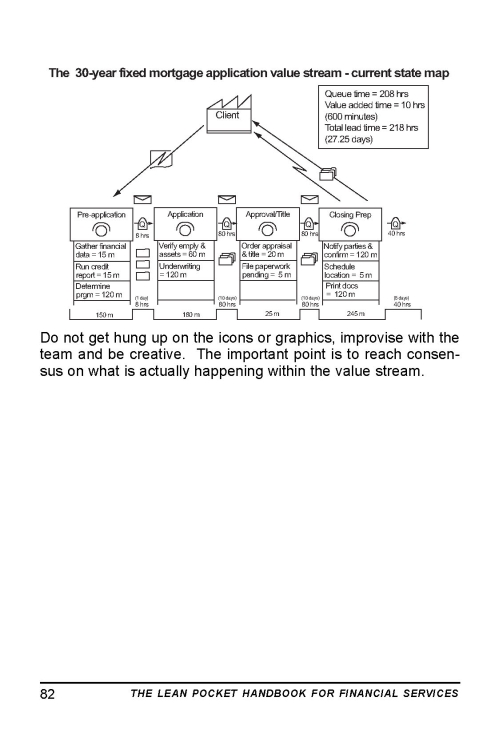
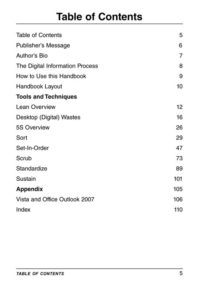

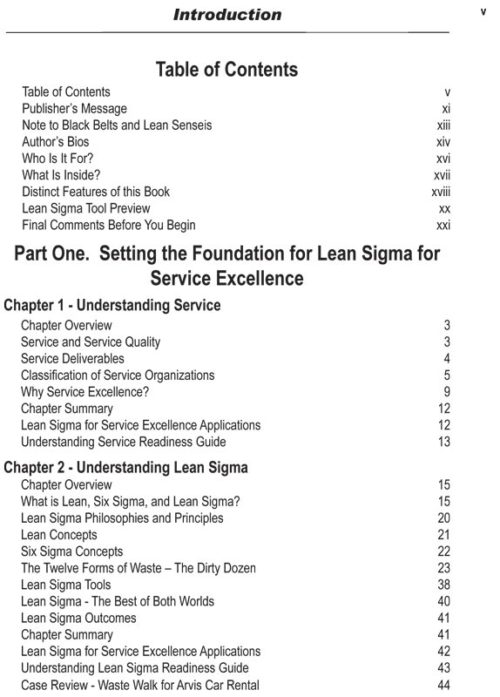
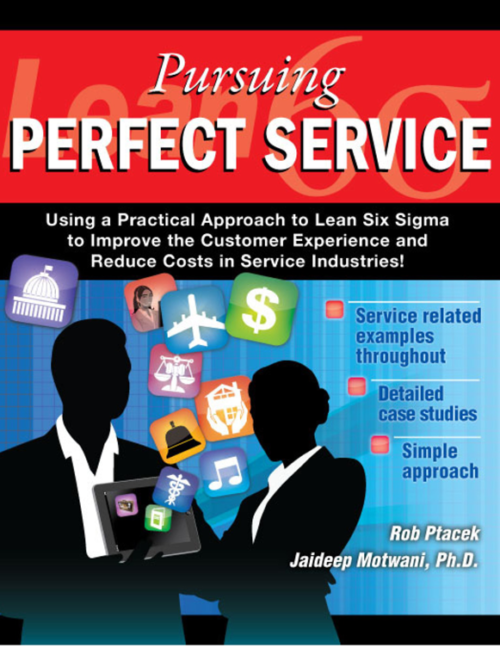
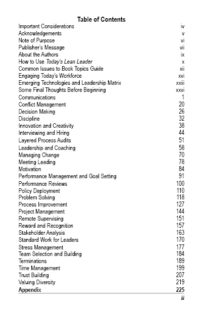

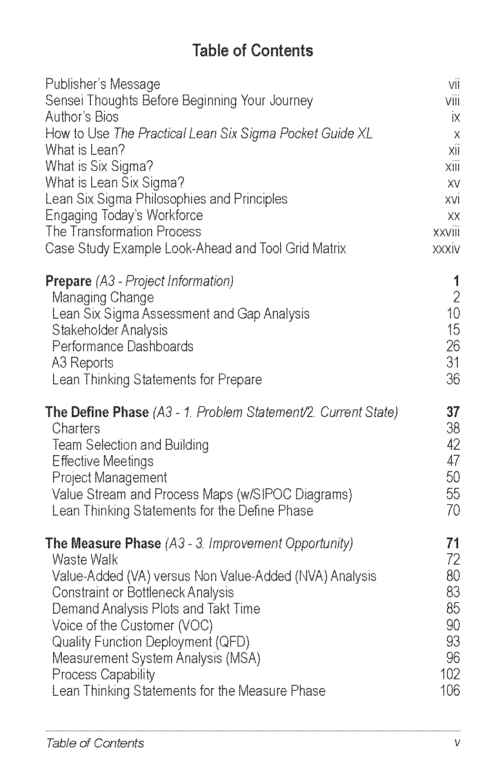
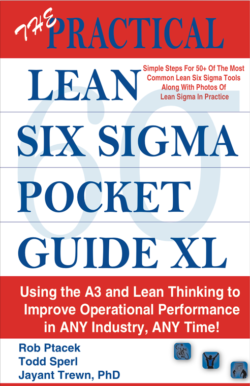
Reviews
There are no reviews yet.